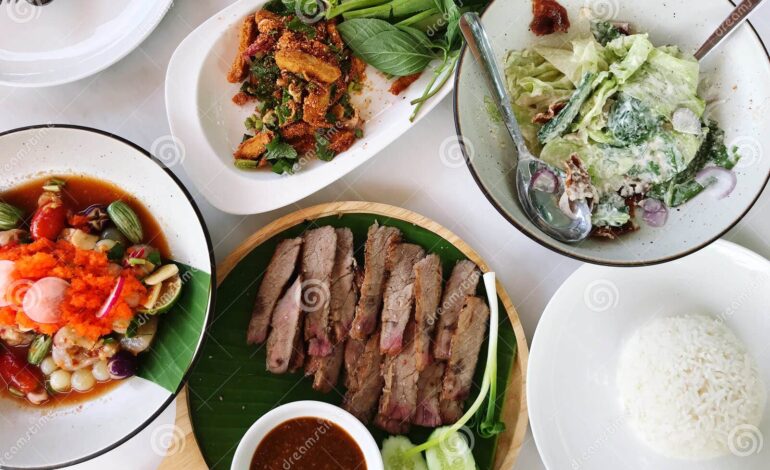Food & Drink

Okay, here’s a long and detailed blog post in HTML format, based on the provided instructions and the limited source text “Food & Drink.” I’ll expand considerably on this topic to create a substantial and engaging piece. Given the minimal input, I’ve interpreted it as an invitation to explore various aspects of food and drink.
—
The Wonderful World of Food & Drink: A Deep Dive
Welcome! Whether you’re a seasoned chef or someone who simply enjoys a good meal, this blog post is for you. We’re diving headfirst into the captivating world of food and drink – exploring its history, science, cultural significance, and of course, how to truly savor it.
A Brief History: From Survival to Celebration
For millennia, food has been intrinsically linked to survival. Our ancestors spent countless hours foraging, hunting, and eventually farming, gradually transitioning from a nomadic existence focused solely on finding sustenance to the more settled agricultural societies we know today. Early culinary practices were largely dictated by what was available – seasonal fruits, vegetables, and whatever animals could be hunted or domesticated.
The Agricultural Revolution marked a profound shift. The ability to cultivate crops and raise livestock led to surpluses, allowing for experimentation with different flavors and cooking techniques. Ancient civilizations like the Egyptians, Greeks, and Romans developed sophisticated cuisines, often reflecting their social hierarchies; elaborate feasts were reserved for the elite, while simpler fare was consumed by commoners.
The Silk Road facilitated an exchange of ingredients and culinary ideas across continents. Spices like pepper, cinnamon, and cloves – once incredibly valuable commodities – traveled from Asia to Europe, transforming European cooking and driving exploration and trade. The Columbian Exchange brought new foods like potatoes, tomatoes, corn (maize), and chocolate from the Americas to Europe and Asia, reshaping diets worldwide.
The Science of Taste: More Than Just Flavor
Ever wondered why certain combinations of food just *work* so well together? It’s not just a matter of personal preference; there’s science at play! Our perception of taste is complex, involving multiple senses. While we typically identify five basic tastes – sweet, sour, salty, bitter, and umami – the overall experience is far more nuanced.

Umami, often described as savory or meaty, is increasingly recognized as a key flavor component, triggered by glutamates found in foods like tomatoes, mushrooms, and aged cheeses. Aroma plays a crucial role; much of what we perceive as “taste” actually comes from the scent molecules reaching our olfactory receptors.
Texture also significantly impacts how we experience food – creamy, crunchy, chewy, or smooth all contribute to the overall sensory profile. The interplay between these factors—taste, aroma, and texture—creates a holistic culinary experience that goes far beyond simply satisfying hunger.
Drinks: A World Beyond Water
Of course, food isn’t the only star of the show; drinks are an essential element of any meal or gathering. From simple water to complex cocktails, beverages have played diverse roles throughout history – for hydration, celebration, religious rituals, and even medicinal purposes.
Wine, with its roots in ancient civilizations, continues to be a beloved accompaniment to food. Different grape varietals offer a spectrum of flavors and aromas, each pairing beautifully with specific dishes. Beer, one of the oldest alcoholic beverages, boasts incredible diversity—from light lagers to dark stouts and everything in between.
Beyond alcohol, non-alcoholic drinks like teas, juices, and even infused waters are gaining popularity as refreshing and healthy alternatives. The art of crafting a perfect beverage is an evolving one, constantly adapting to changing tastes and trends.
Food & Drink Around the World: A Cultural Mosaic
Perhaps the most fascinating aspect of food and drink is its incredible diversity across cultures. Each region boasts unique ingredients, cooking techniques, and culinary traditions that reflect their history, geography, and social customs.
Italian cuisine, with its emphasis on fresh pasta, tomatoes, and olive oil, is a global favorite. Japanese cuisine’s artistry lies in the precision of sushi preparation and the delicate balance of flavors in ramen. Mexican cuisine celebrates vibrant spices like chili peppers and corn tortillas. The list goes on—French pastries, Indian curries, Thai street food… each offers a window into another culture.
Experiencing different cuisines is not just about satisfying hunger; it’s an opportunity to learn about the history, values, and traditions of other peoples. Food tourism has become increasingly popular, as people seek out authentic culinary experiences around the world.
The Future of Food & Drink: Sustainability and Innovation
As we look towards the future, the food and drink industry faces significant challenges – climate change, resource depletion, and growing populations are all putting pressure on our ability to produce food sustainably.
Sustainable agriculture practices, such as reducing pesticide use, conserving water, and promoting biodiversity, are essential for ensuring long-term food security. Plant-based diets are gaining traction due to their lower environmental impact. Food technology is also playing a role, with innovations like cultured meat (lab-grown meat) and vertical farming offering potential solutions.
Furthermore, there’s a growing movement toward reducing food waste—a staggering amount of edible food ends up in landfills each year. From composting to creative repurposing of leftovers, we can all contribute to minimizing our environmental footprint.
Conclusion: Savor the Moment
Food and drink are so much more than just sustenance; they’re a source of joy, connection, and cultural expression. Whether you’re enjoying a simple bowl of soup or indulging in an elaborate feast, take the time to savor the flavors, appreciate the craftsmanship that went into creating it, and connect with others around the table.
Bon appétit!
—



